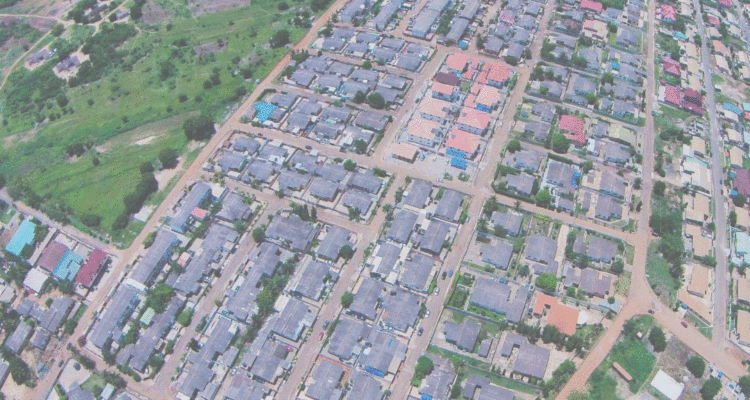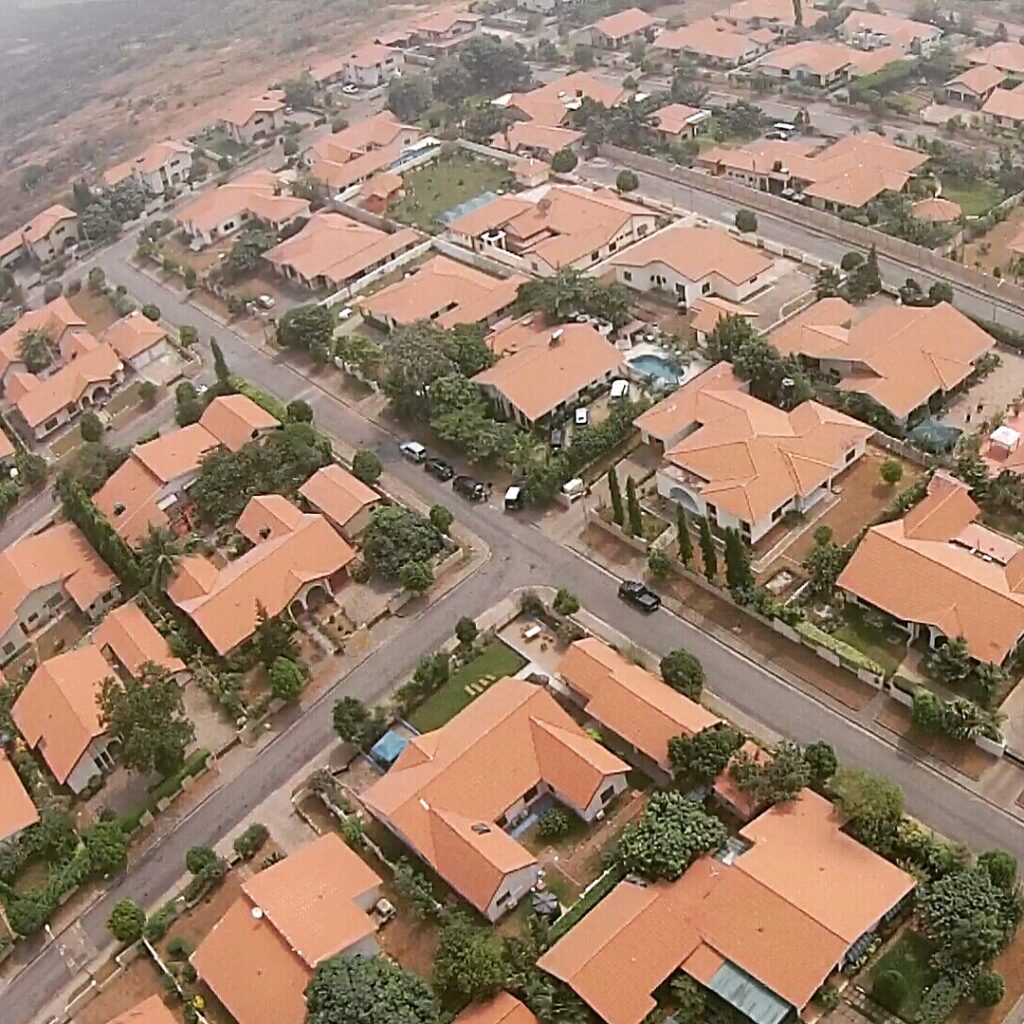The preference for having private housing estates, much like with private cars, be Ghana’s preferred way of catering to rapid urbanization needs a fresh interpretation and application. Private housing estate infrastructure policy requires its own post-development “road” worthiness test, its own resiliency protocol, this in the form of a Housing Estate Resilience Plan for each and every development.
As is the common practice, completed housing estate developments are handed over to homeowner associations for management. These estate developments, replete with an intricate network of roads, septic tanks, drainage pipes & gutters, plus streetlights as well as water and sewer lines infrastructure, are left in the hands of a loosely-knit collection of homeowners.
These infrastructural amenities/facilities do demand ongoing maintenance and will require refurbishment, rehabilitation or replacement in the medium-to-long term. Given that [1] the demographics of these homeowner sets include absentee and retiree owners; [2] there exists no apparent capital improvements planning for these estates and [3] these homeowners are neither uniquely or purposefully prepared to manage their estate’s infrastructural affairs, the case to undertake exercises in foresightedness which develop a product that will map and devise a resiliency strategy for each and every estate’s fortunes becomes glaringly important.
Technical support and advisory services for housing estates and their residents, plus built environment professionals, so that they may all undertake and facilitate, respectively, sustainability and resiliency ‘clinics’ are initiatives worth pursuing. The need to capacitate those who have been inadvertently made stewards of key sub-sectors of Ghana’s built environment landscape needs immediate attention. Ongoing heedlessness to this policy imperative—of the need for private built environment resiliency—may one day severely compromise the sustainability of Ghana’s human settlement environment, if it has not already started to do so.
Evidence of increasingly crumbling housing estates may be easily and readily found in Ghana’s urban landscapes. Indeed, the omnipresence of mal-manifestations of ill-managed but once-aspiring estates—of deteriorating roads, of uncompleted or unkempt housing lots , of already-blighted buildings, of scarred landscapes—clearly indicates that the placing of publicly-consequential infrastructure into the hands of private stewards has been an erroneous path towards housing estate frailty and fragility.
Then also, these housing estates, cloistered as they are, strangle road corridors as their confines constrict transportation interconnectivity between and amongst routes and destinations. Additionally, it may be surmised that these deliberately- and/or mistakenly-designed housing estates and their infrastructure are not of size or capacity to accommodate future growth demands or any variations in continuing urban development. Furthermore, these private infrastructural amenities, such as roads and drainage systems, have not been built with future governmental maintenance in mind. Arguably, private infrastructure over the long term ought to come under the purview of local government, rather than a loosely-knit association of homeowners.
Currently, the modus operandi in the private housing estate infrastructure sector has it that ‘managers’ are already entangled in future quagmires about which they have little intelligence, especially the sort of ‘intelligence’ which may service evidence-based decision-making.
Private housing estate homeowner association managers need to ascertain the following when it comes to the resiliency of their developments: [1] the needs, scope, costing, maintenance and forecasting scenarios for their infrastructural facilities and amenities; [2] the managerial ‘muscle’ needed to tackle the stewardship of their infrastructural portfolios. Thereupon, planning timelines and implementation strategies as well as growth management devices and developmental inputs, in addition to financing instruments, redevelopment plans, maintenance measures, and ongoing operational actions may be marshalled.
By way of a pathway to resiliency for private housing estates the following are suggested:
1. Each and every housing estate resident association should undertake a capital improvements program/CIP planning process, i.e. a ‘clinical’ diagnosis towards the development of a horizon plan for each and every component of its intertwined infrastructural system.
- Private housing estates should be engaged in these planning clinics over a span of six months.
- The CIP procedure should include the following:
– Getting Started – homeowner association organizational re-strengthening exercises
– Taking Stock – a facilities & amenities inventory process
– Undertaking Planning – a capital improvements planning process
– Taking Action – resilience plan execution
- The housing estates located on the Spintex Road Corridor may serve as a pilot area
2. Long range financial planning in the form of built environment quantities surveying and a series of financial forecasting exercises should be undertaken. These should be executed in order that each and every housing estate may ascertain the future costs of their estate’s infrastructural management demands and their resilience requirements.
-
- A capital improvements budget to accompany each estate’s CIP with be the output of these efforts.
3. This suggested financial forecasting exercise should be conducted in partnership with the banking/financial services sector such that the fiduciary preparedness of each homeowners’ association will be at its optimum, one homeowner association member to another and amongst all, replete with a completed financial/insurance instrument which is robust enough for an estate’s resilience.
- A fiduciary bond, replete with financing and insurance provisions, will be output of this effort.
4. Documentation and replication clinical exercises in resilience may be achieved through filming, among other methods.
-
- All documented content will be used to develop and broadcast public services announcements/PSAs which will be used to educate housing customers/consumers across the country. PSAs will advise homeowners and their associations as to how best to attend to their current and future state of affairs when it comes to their housing estate’s resilience.
– The Ghana Institute of Planners, the Ghana Institution of Engineers, the Ghana Institute of Architects and the Ghana Institution of Surveyors, in addition to built environment and financial services sector stakeholders, and all under the leadership of the National Development Planning Commission and the respective Town and Country Planning Departments ought to forge this nationwide pathway to resiliency for private housing estate infrastructure.
- The current dearth of policy for private infrastructure, housing estate-wise or otherwise, is on auto pilot, and on to impending implosion if current levels of inattentiveness remain. The instituting of resiliency for housing estates and for all forms of private infrastructure—for all of such infrastructure have public implications and consequences—should attended to with immediacy.
- All documented content will be used to develop and broadcast public services announcements/PSAs which will be used to educate housing customers/consumers across the country. PSAs will advise homeowners and their associations as to how best to attend to their current and future state of affairs when it comes to their housing estate’s resilience.
5. A professional development INSET course should also be developed for district-level built environment professionals. This course will equip these practitioners with tools for private housing estate resiliency planning. It is hoped that national attention and nationwide application of our private housing estate policy may be effectuated by these professionals/practitioners. The stewardship of private infrastructure should not start and stop at the land development review stage; it should extend to the post-development phases of any infrastructural system’s successive life cycles, especially given that such infrastructure—even though it may remain in private hands—will have public consequences, as they already have public implications.
- The training of these professionals may be developed under the guidance of the built environment disciplines at KNUST/Kwame Nkrumah University for Science and Technology.
6. Advocacy which promotes the effectuation of institutional measures, such as legislation, and which protects prospective housing estate customers/consumers as well as realizes resiliency compliance amongst the ranks of existing homeowners and their estates should also be pursued. Policy advocacy could therefore be directed at Parliamentarians, local government functionaries as well as the general public and construction sector purveyors.
Postscript:
The United Network for Integrated Development Planning & Management/UNIDPM (www.unidpm.org) and its Buildberg Initiative proffers this participatory method through which to address this impending resiliency threat to Ghana’s private housing estate stock. UNIDPM maintains a collective of built environment professionals—architects, planners, engineers, and surveyors etc.—who are on offer to advice residents’ associations on the resiliency requirements of their residential estates.
‘Estating’ The Obvious: Private Housing Estate Resiliency
By Ekem Amonoo-Lartson



